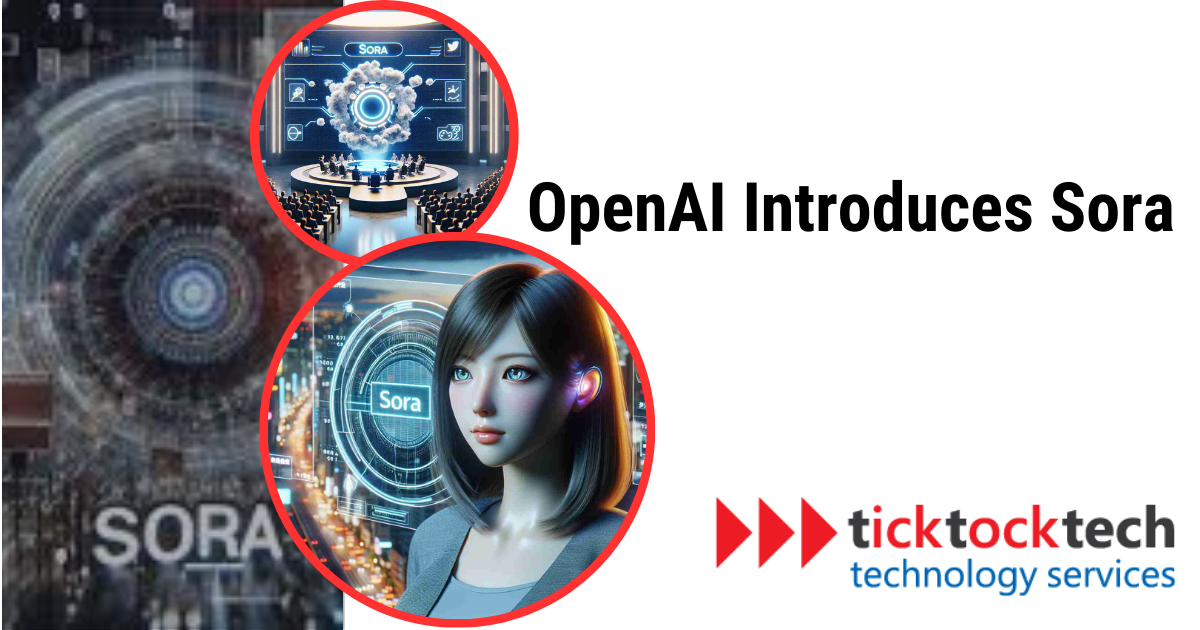Imagine a world where you can type a few words to generate a high-quality video with visuals and music. Welcome to the future of video creation, thanks to ChatGPT’s OpenAI innovation, Sora.
What is Sora?
Sora is a text-to-video AI model developed by OpenAI. This remarkable technology can create videos of different durations, resolutions, and aspect ratios, all from a simple text prompt.
Sora is a significant milestone in the field of artificial intelligence. By combining the power of deep learning with the imaginative potential of video creation, Sora takes text instructions and brings them to life in video form.


With Sora, you can type a description and watch it come to life as a video. Whether it’s crafting scenes with multiple characters or specific motions, Sora handles it with an impressive understanding of language and physical world concepts.
This text-to-video AI model unlocks limitless possibilities for content creation and the entire entertainment industry. Sora is a unique combination of creativity and innovation, opening up new avenues for storytelling, animation, and beyond.
Related: How to use Midjourney’s new Niji mode to generate images
How does OpenAI Sora work?
Sora, OpenAI’s innovative model, uses the power of large-scale training on video data to produce dynamic and realistic video content from textual descriptions. But how does it achieve this? Here’s a detailed breakdown of how Sora operates:
1. Analyzing Text Prompts
Sora operates by leveraging the advancements in artificial intelligence to understand and interpret textual prompts, transforming them into detailed, moving visuals. OpenAI’s Sora utilizes large-scale training datasets composed of video data. This training allows Sora to recognize patterns, motions, and the intricacies of scenarios depicted in videos, enabling it to replicate these elements when generating new content.
2. Diffusion Modeling
Sora is a diffusion model, meaning it starts with a video that looks like static noise and gradually transforms it into a scene based on the text instructions provided. Diffusion models work by initially generating a random distribution of pixels or, in simpler terms, an image that resembles static noise. Over a series of steps, the model gradually refines this noise, shaping it into a coherent image or video that aligns with the provided text prompt. This process allows Sora to generate or extend videos, ensuring that subjects remain consistent even when they temporarily go out of view.
3. Transformer Architecture
Sora uses a transformer architecture, which has been instrumental in models like GPT for text and DALL·E for images. Transformers excel in sequences of data, making them ideal for video generation where continuity and coherence over time are crucial. Sora’s transformer analyzes small pieces of video data to create videos that look real, just from a simple text description.
4. Processing Spacetime Patches
A distinctive feature of Sora’s operation is its conversion of videos and images into spacetime patches. This innovative approach breaks down the visual content into manageable units, allowing Sora to manipulate these patches to assemble the final video.
Related: How to Spot a Deepfake Scam
Features of OpenAI Sora Text-to-video Model
OpenAI’s Sora brings innovations to video generation with its diffusion transformers, known for their excellent scaling capabilities. This technology enables Sora to produce high-quality videos that rival human-created content. One of Sora’s standout features is its ability to generate videos in their native aspect ratios, resolutions, and durations, offering unmatched flexibility. This means Sora can adjust content directly for different devices and platforms without manual resizing or cropping. Additionally, Sora improves video framing and composition by training on videos in their original aspect ratios, ensuring subjects are well-represented and scenes are accurately framed.
Language understanding is another unique feature of Sora. By applying re-captioning techniques and leveraging GPT for extended captions, OpenAI’s Sora can generate videos that closely follow detailed user prompts. Beyond text, Sora accepts images and videos as prompts, broadening its use for editing tasks.
Related: Mistral releasing the most powerful open-source AI model
Conclusion: OpenAI Sora Text-to-video AI Model
Sora is an innovative text-to-video AI model by OpenAI to create high-quality videos from simple text prompts. It uses a transformer architecture and spacetime patches to analyze and generate videos. With Sora, you can type a few words prompt and watch it come to life as a video. As we explore the potential of this innovative technology, the possibilities for content creation and digital artistry are boundless.

